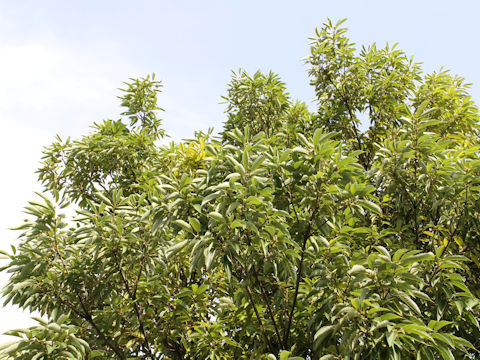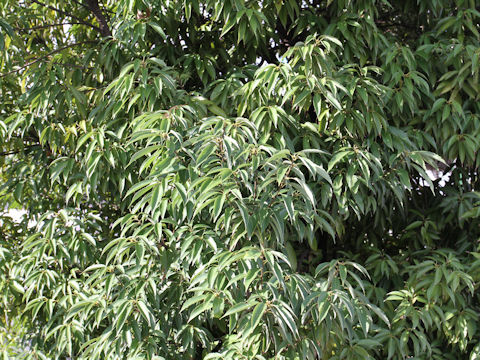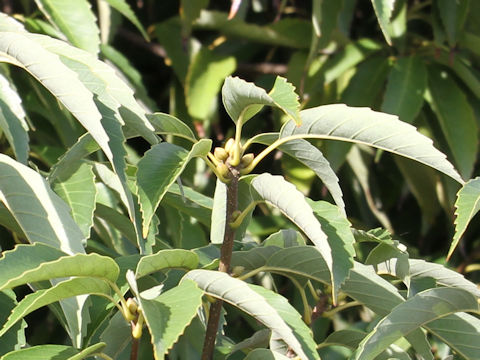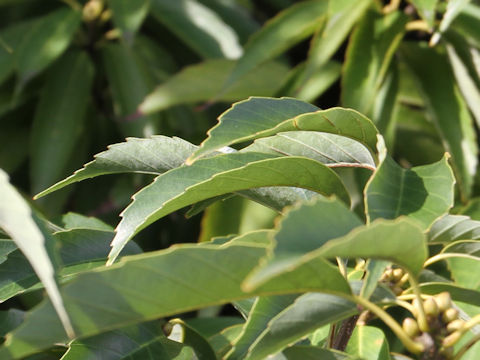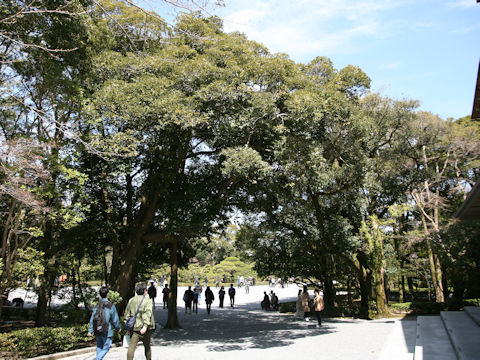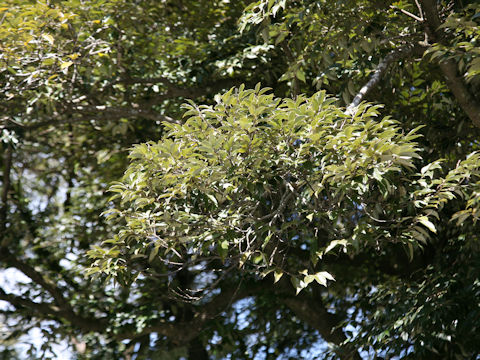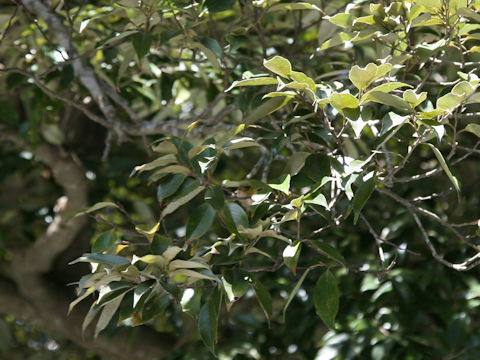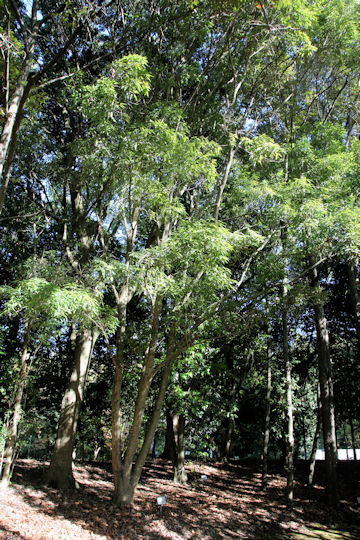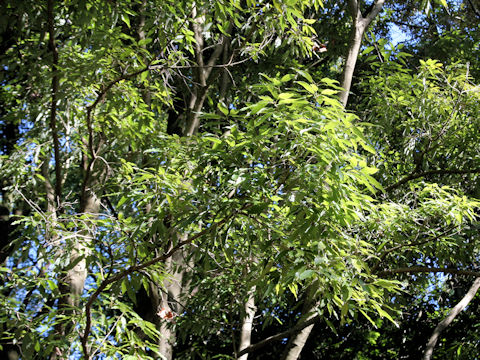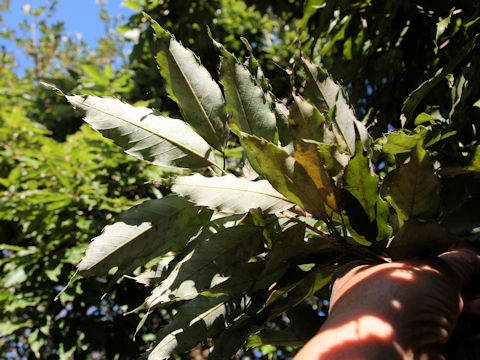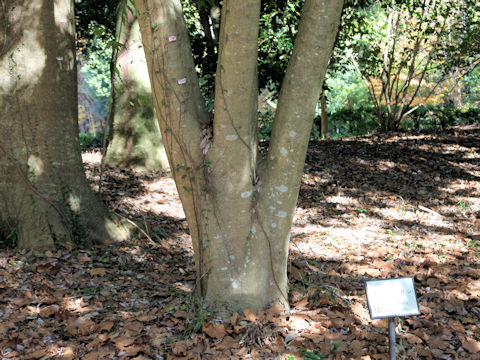
|
The "Urajiro-gashi" (Quercus salicina) belongs to Fagaceae (the Beech family). It is a tall evergreen tree that is from Miyagi-Niigata Prefecture of Honshu west to Shikoku and Kyushu in Japan, as well as Jeju-do (southern Korea) and Taiwan. This tree grows in mountains and up to a height of about 20 m. The bark is gray-black, smooth and the rounded lenticels are diffused. The leaves are elliptic-lanceolate and thin leather with acute tips, and shallow saw teeth in over two thirds of the top. The surface is glossy and the reverse side is powdery white. It is monoecious. The male inflorescences are hung from the lower part of the new branch, and the female inflorescences are erected on the axil of the upper part of the new branch, around May. The fruits are broad ovate nuts and will mature in the fall of the following year. The timbers are used as building materials and equipment materials. In Taiwanese Chinese, it is called "白背櫟".
|
